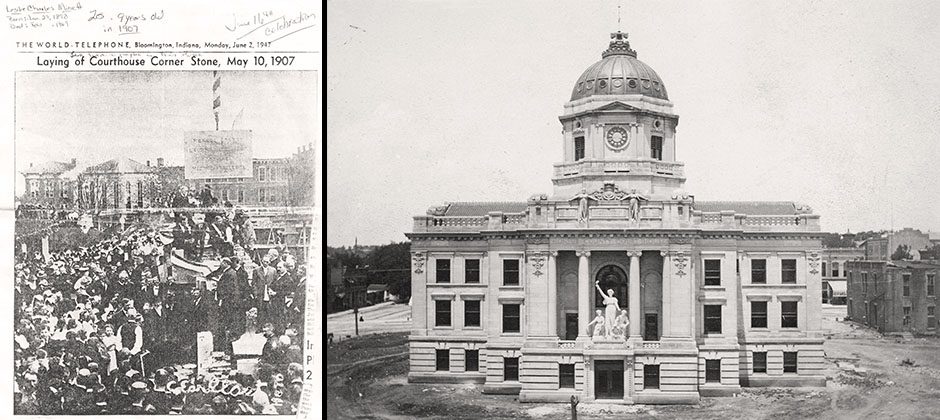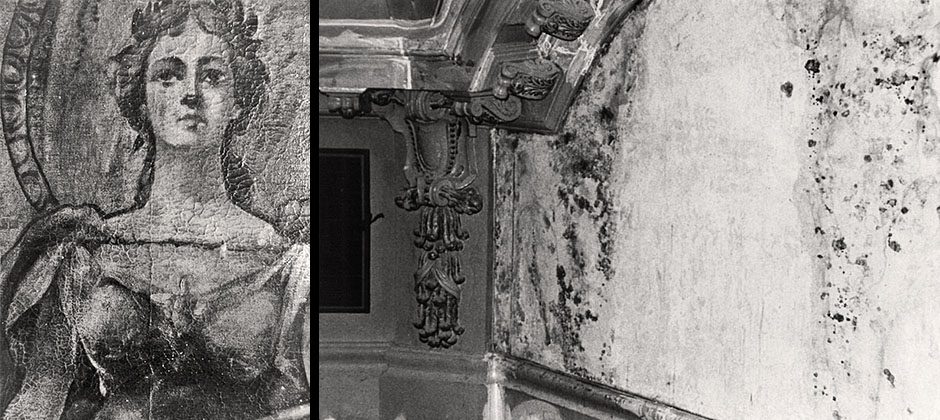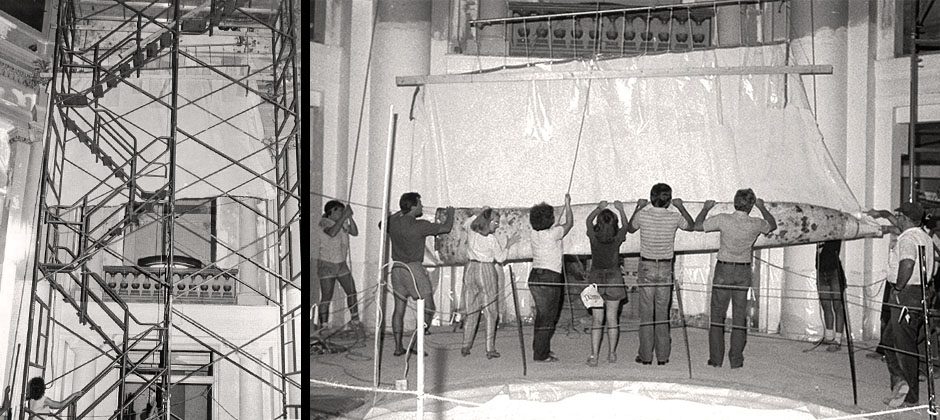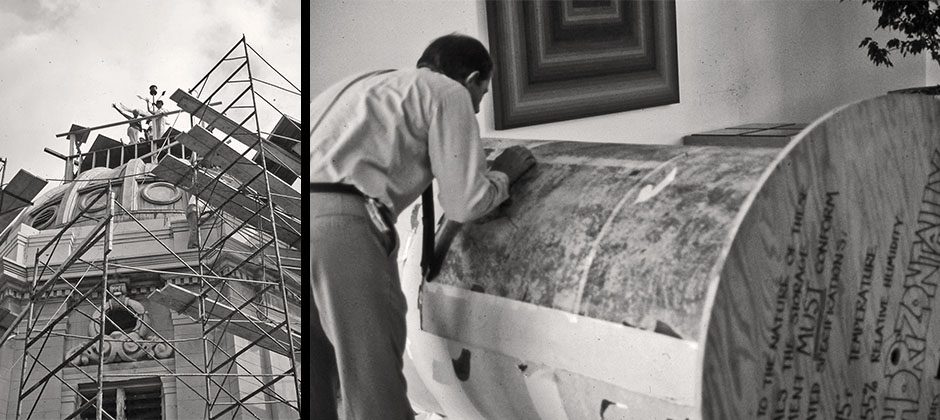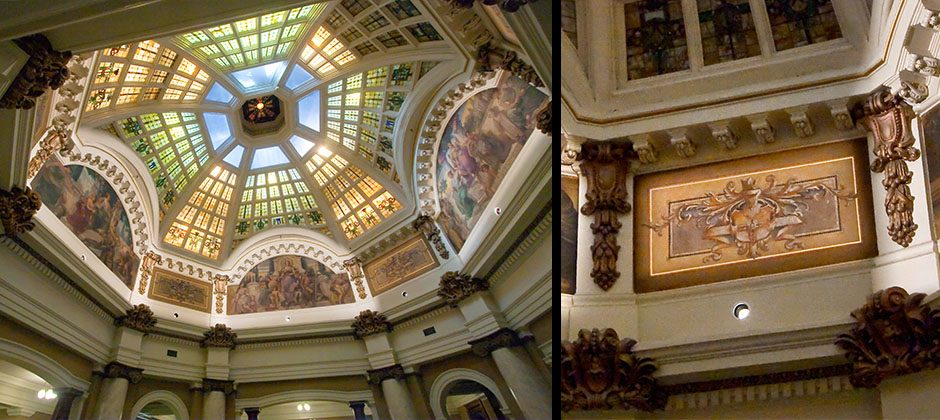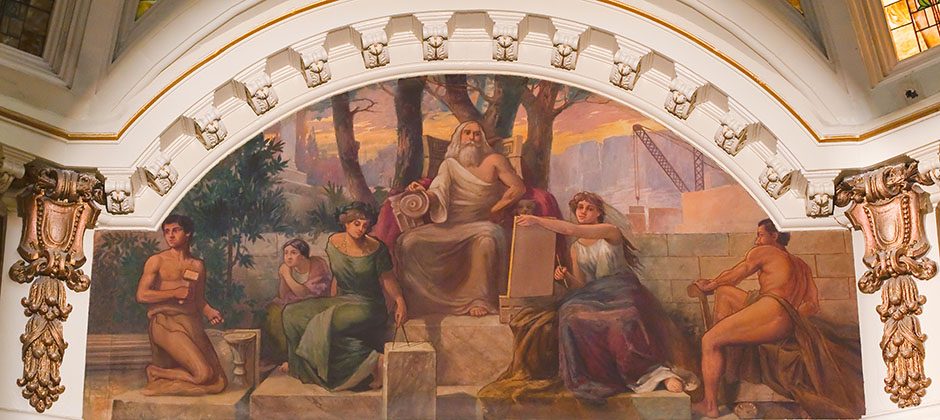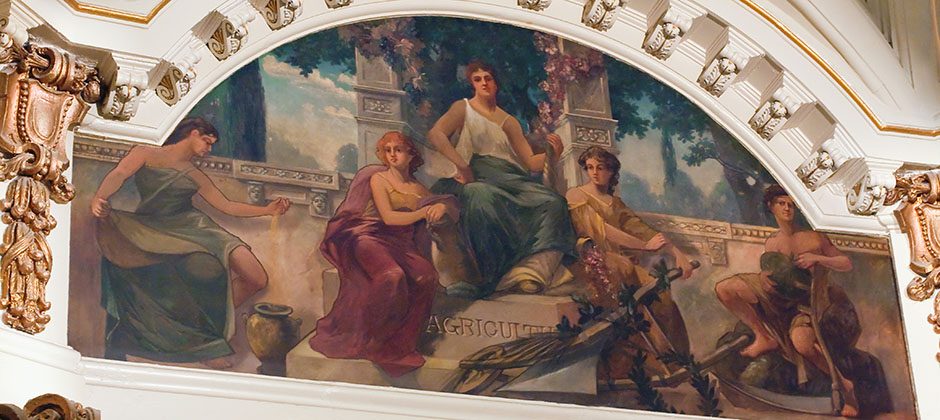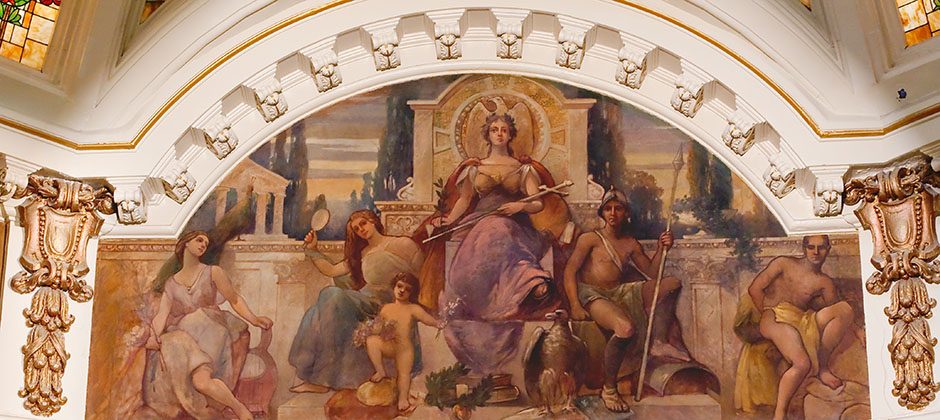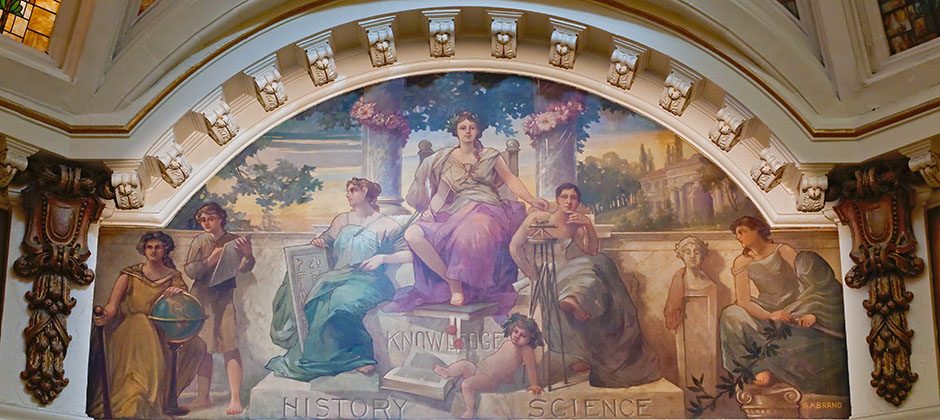It was the Gilded Age in 1907 when the Monroe County Courthouse rose stone by stone before the admiring eyes of local citizens. The courthouse reflected the monumental Beaux-Arts classical architecture popularized by the 1893 Chicago World’s Fair. From there, the architectural style made its appearance across the country.
Architects Marshall and Guy Mahurin built the Monroe County Courthouse using the classical architectural theme throughout, from the Indiana limestone exterior and copper-covered dome to the colorful murals, massive columns, and interior leaded glass. While Gustav A. Brand, German Artist, was contracted to decorate the interior and paint the dome murals. The building was dedicated on July 4, 1908.
Following a remodeling project in 1962, additional floors were placed across the rotunda, which created a courtroom under the dome and its murals. Few people saw the dome’s interior for over twenty years unless they had reason to be in Superior Court. Fatefully, upon moving to Bloomington, Gayle Cook, co-founder of Cook Medical, a global medical device manufacturing company, and CFC Properties, a real estate development and property management company, served on Jury Duty in 1963. She once recalled while sitting in the courtroom gazing at the dome, not in good condition, wondering what it could look like.
The Indiana Department of Natural Resources and the U.S. Department of the Interior placed the Monroe County Courthouse on the National Register of Historic Places in 1978.
By 1983, 150 people, including Gayle, joined the Save Our Courthouse Committee to form a solution to prevent the courthouse from being torn down. Ultimately, discussions led to an additional renovation that reopened the view of the dome. Gayle and other committee members helped remove the murals from the dome. They were placed into storage within the Judge’s chambers while the county considered ways to fund the preservation repairs and installation. The courthouse was rededicated on October 28, 1984, without the murals.
The four 8 x 16-foot murals were believed to be misplaced at one point. Ironically, Bill and Gayle Cook purchased the Brown School from the Monroe County Community School Corporation on August 31, 1984, to serve as the new home for the Star of Indiana Drum and Bugle Corps. During a site visit in 1992, Gayle discovered the murals in the gymnasium. Being Gayle was part of the committee that helped remove the murals, the insignia on the rolled-up spools were instantly recognizable.
Gayle shared…
“Somehow, they had been stored at the unused Brown School… Advisories on the huge canvases to store them at archival humidity and temperature had not exactly been followed.”
The oil-painted canvases were in very poor condition, with water damage and soil accumulation. Each mural had estimates of six inches of paint missing around the edges, and in some areas, the image, including the canvas, was completely gone. Gayle contacted Conrad Schmitt Studios in New Berlin, Wisconsin, who specialize in artistic preservation, and contracted their help.
Months of painstaking labor went into restoring Gustav’s original murals. In addition to the large murals, the artistic preservationist restored four smaller rectangular murals in the dome using scaffolding. The smaller murals have never been removed.
The large murals depict four themes using classical imagery appropriate to the building’s architecture, its use, and the character of Monroe County.
STONE INDUSTRY (east side): The limestone theme acknowledges the county’s leading industry in the early twentieth century. The elder in the center personifies the Stone Age, while additional figures and tools portray the progress of stone working from a rough block to a classic column. A quarry is also depicted in the background.
AGRICULTURE (south side): Agriculture illustrates farming being a major occupation in the county during 1908. The figure on the left is placing harvested grain in a storage pot, while others display a cornucopia, a hand plow, and a scythe.
JUSTICE (west side): The goddess of justice in the center holds the sword of righteousness and the wreath of peace and glory. Holding a lyre, the female on the far left presents the balance of peace and harmony. While the other female holds the mirror of truth. On the far right, a male figure lurks, suggesting the threat of malice and treachery, while the military figure next to him signifies defense against such peril.
EDUCATION (north side): The figures, with their scholarly and scientific equipment, symbolize knowledge and the presence of Indiana University. Subjects represented include books, writing, a globe, a surveyor’s transit, ancient history, and teaching. The artist’s signature, G.A. Brand, appears in the lower right corner of the mural.
The $70,000 project took nearly a year to complete. The murals were protected using the latest and best-known preservation technology. In November 1993, the large murals, including a special barrier, were reinstalled in the dome to prevent mildew and moisture damage. Restoration documentation aids proper care and preservation efforts for decades to come.

